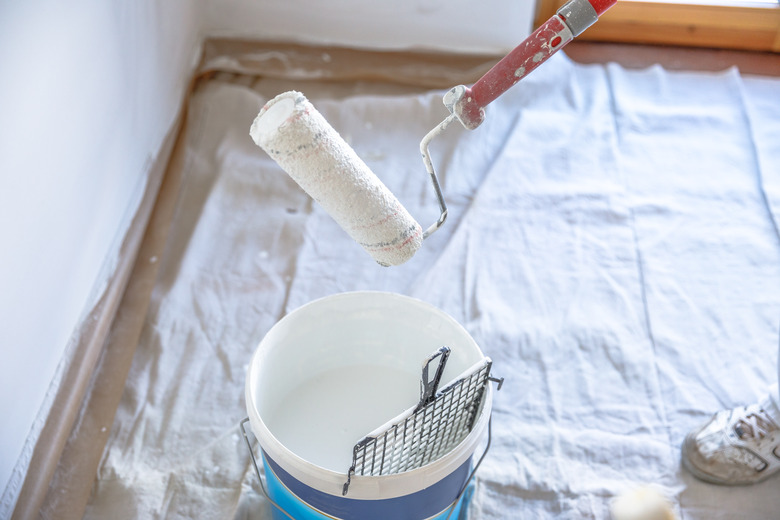How To Paint Over Cracked Paint In The Bathroom
We may receive a commission on purchases made from links.
Cracked paint in a bathroom is usually due to the underlying substrate (plaster or drywall) deteriorating or flexing with temperature and humidity changes. Bathrooms can be hostile environments for paint because of the high moisture levels.
Painting over cracked paint without correct preparation results in an uneven surface and peeling paint within a fairly short time. If you don't mind a little hard work and mess, you can deal with that cracked paint and have a smooth and durable bathroom paint job. This will help ensure that your paint stays on indefinitely once bathroom painting is complete.
1. Prepare the Work Area
Prepare the room by cleaning off the countertop, removing the shower curtain and taking towel bars and switch-plate covers off the wall. Open a window or turn on the fan before starting work to speed drying.
2. Clean Surfaces to Be Painted
Clean all the surfaces to be painted. Use a mild detergent and wipe down the walls, ceiling and trim, finishing up with a clean water rinse. Make sure the walls are squeaky-clean and free of hairspray residue, soap scum and mildew. Paint sticks more readily to clean walls.
3. Remove Peeling and Cracked Paint
Use a chisel-edged scraper to remove as much peeling and cracked paint as possible. For best results, pull the scraper down in a vertical motion. Be careful not to remove wallboard when scraping off paint. If this begins to occur, reclean the surface to moisten the paint and try scraping again.
4. Apply Joint Compound to Cracks
Spread a thin coat of ready-mixed joint compound over uneven areas where you've removed old cracked paint. Use a 9- or 12-inch drywall knife. Since joint compound shrinks as it dries, it may take two or three coats to get a level surface. You can find joint compound at establishments like Amazon, Home Depot and Walmart.
Lightly sand the areas where you apply joint compound in between coats to knock down the high spots. Then do a final sanding with a medium-fine sanding sponge. Wipe the sanding dust away with a damp sponge.
5. Protect Surfaces With Painter's Tape
Mask the edges of anything you aren't painting, such as countertops, tile and baseboards. For the cleanest lines, use blue painter's tape. Take your time applying painter's tape. Though the task can seem time-consuming and tedious, it takes much more time to remove wayward paint from surrounding surfaces. Sometimes the paint can't be removed without marring surfaces.
6. Prime Bathroom Surfaces for Painting
Prime bathroom surfaces to be painted with one coat of oil- or tinted shellac-based primer. Allow the primer to dry as recommended on the label. Keep windows open or a fan going to dissipate fumes, because these primers are pungent. Air circulation will also help to hasten drying.
7. Bathroom Painting Tips
Paint the bathroom with two coats of high-quality latex paint. When painting, use smooth even strokes or a roller. Allow at least four hours of drying time in between coats. Also avoid using the bath or shower for at least 12 hours to allow the paint to dry thoroughly. If the paint gets splashed by water prior to thoroughly drying that can cause the paint to soften and splotch and run.
